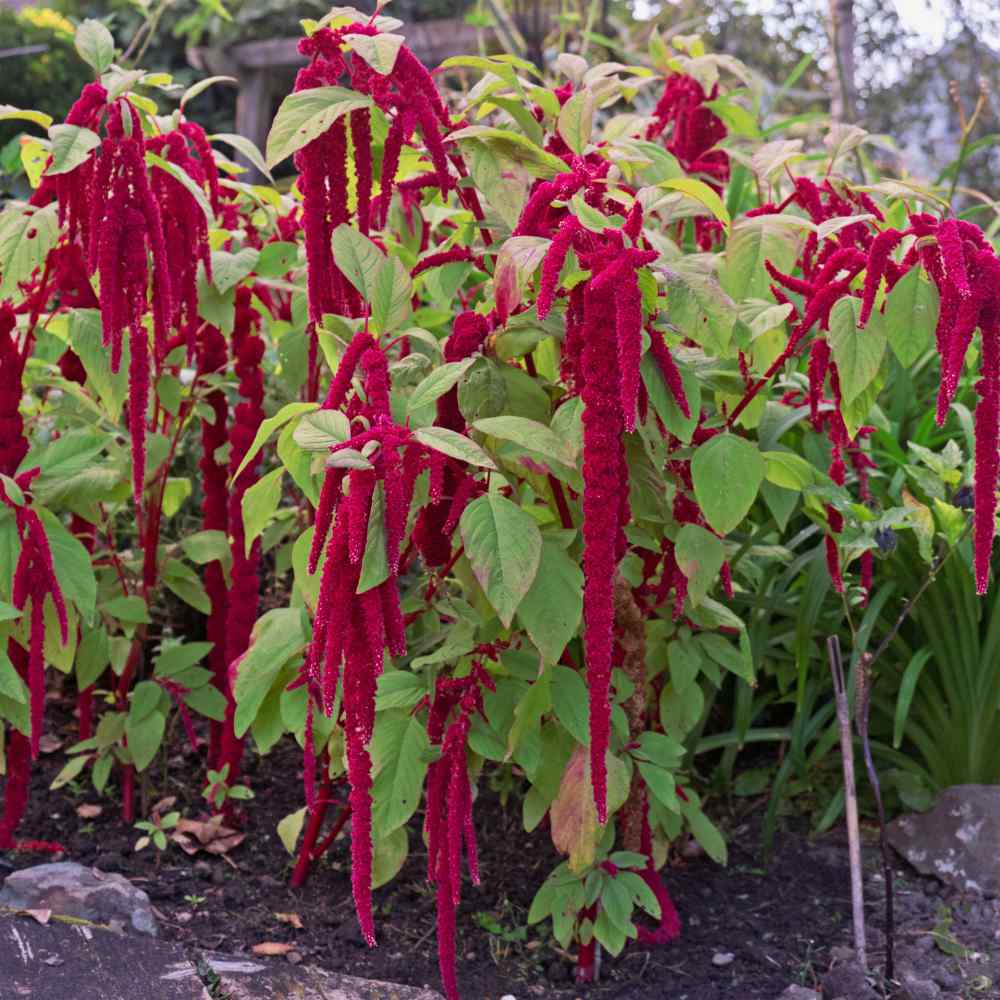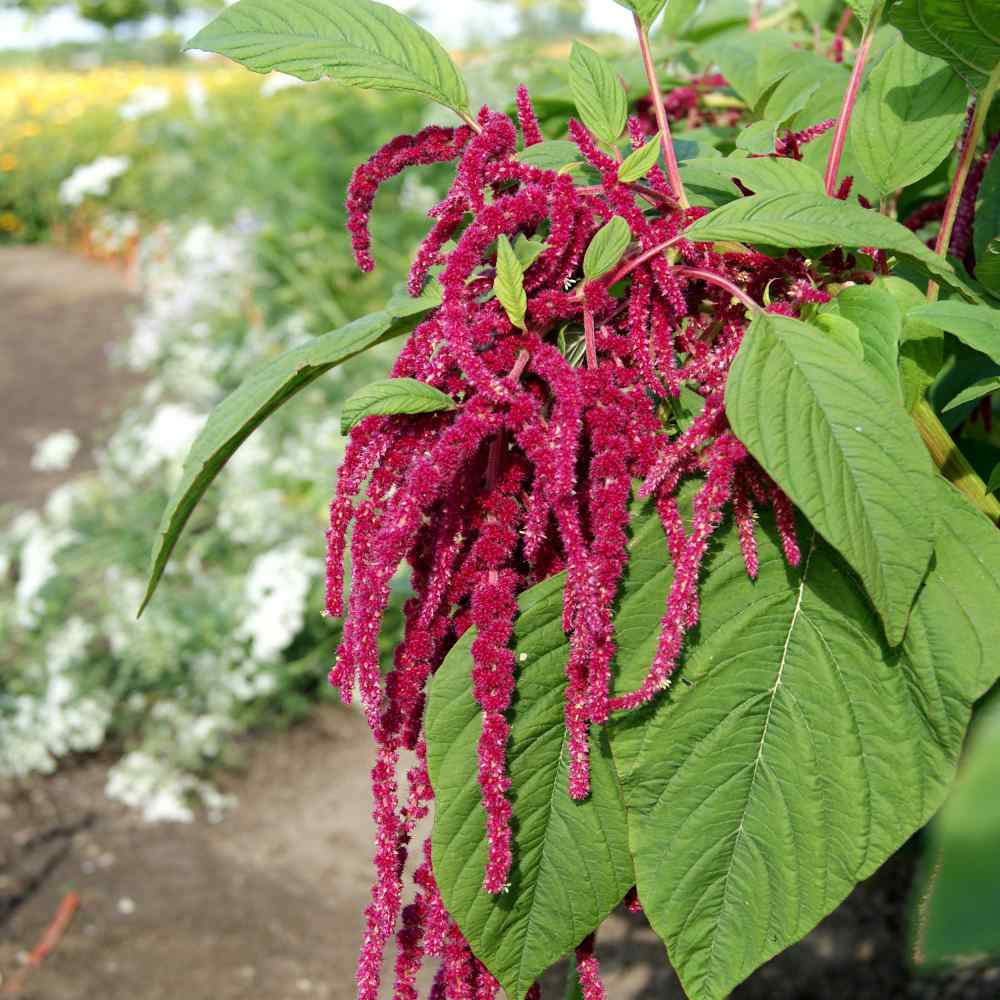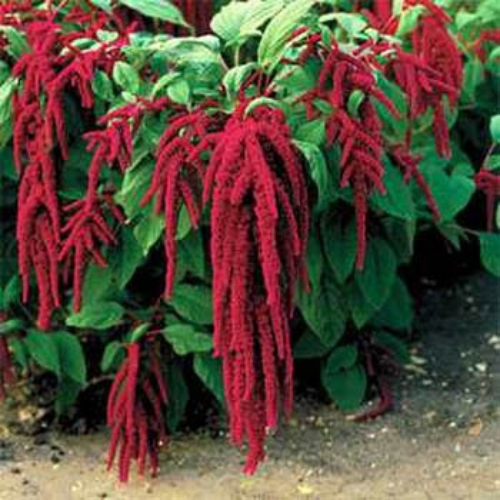Amaranthus Seeds - Red

Flower Specifications
Season: Annual
USDA Zones: 3 - 10
Height: 36 inches
Bloom Season: Early summer to mid fall
Bloom Color: Red
Environment: Full sun to partial shade
Soil Type: Well-drained, pH 6.1 to 6.5
Deer Resistant: Yes
House Plant: No
Latin Name: Amaranthus Caudatus
Planting Directions
Temperature: 65 - 75F
Average Germ Time: 10 - 21 days
Light Required: Yes
Depth: Press seed into soil, do not cover
Sowing Rate: 4 seeds per plant
Moisture: Keep moist until germination
Plant Spacing: 18 - 24 inches
Care & Maintenance: Amaranthus



Amaranthus (Amaranthus Caudatus Red) - Commonly known as Love Lies Bleeding, these unique flowers are extremely hardy, and they can grow just about anywhere from flower seed. This Amaranthus has elongated red flowers that hang to the ground.
Attracts pollinators
This Amaranthus plant will attract pollinators such as, honeybees, bumblebees, and butterflies. The draping red flowers look beautiful in containers or hanging baskets.

Amaranthus seed | red
How to grow
How To Grow Amaranthus From Seed: To grow Love Lies Bleeding Amaranthus seeds, start seed indoors six weeks before transplanting outdoors, or sow flower seed directly outside after all danger of frost has passed.
Indoors, grow in loam-based potting compost (No. 2) in full light. Water freely in summer, and provide high humidity if possible. Amaranthus Caudatus will tolerate poor soil. Water freely during dry periods in summer to prolong flowering.
- Sowing Rate: 4 seeds per plant
- Average Germ Time: 10 - 21 days
- Keep moist until germination
- Depth: Press into soil, do not cover

Plant Specifications
Love Lies Bleeding blooms all summer long! Each Amaranthus plant can carry tens of thousands of flower seeds, and it will self-seed very easily. The amaranth genus, especially the seed, was used as a food source for the Incas and Aztecs.
- Height: 36 inches
- USDA Zones: 3 - 10
- Season: Annual
- Attracts bees and butterflies































